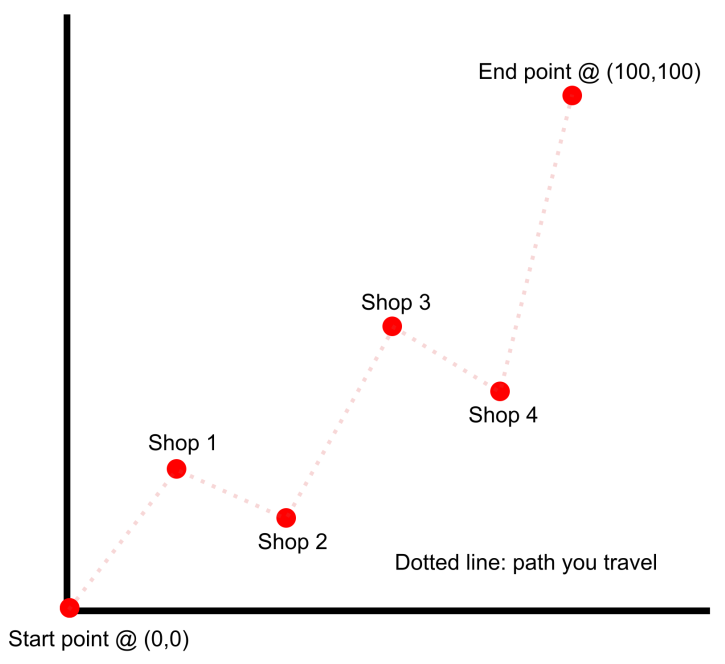G.W. Coding Contest 2 P2: PC Part Picking
Kevin is building an awesome new PC and he needs to purchase components. The components are located at N different shops on a grid, and each shop has a distinct coordinate pair such that no shops share the same \(x\)-coordinate.
Kevin starts at \((0, 0)\), visits each shop, and ends at \((100, 100)\). He needs to visit the shops in an increasing order of \(x\)-coordinates. Given \(N\) distinct coordinate pairs for each shop \((a, b)\), \(\{0 < a, b < 100\}\), determine the shortest possible distance that Kevin needs to travel to reach every shop rounded down to the nearest integer.

Note: The answer should be rounded down, intermediate calculations should always remain as decimals to maintain accuracy.
Input Specification:
The first line of input will contain \(N\), the number of shops Kevin needs to visit.
The next \(N\) lines will contain two integers, \(a\) and \(b\), seperated by a space, representing the \(x\) and \(y\) coordinates of each shop respectively.
Output Specification:
The output will consist of a single integer, the total distance Kevin must travel if he takes the shortest path.
TIME CONSTRAINT: 1s
Sample Input 1:
72 92
57 3
40 66
21 64
62 22
Sample Output 1:
Submit Solution